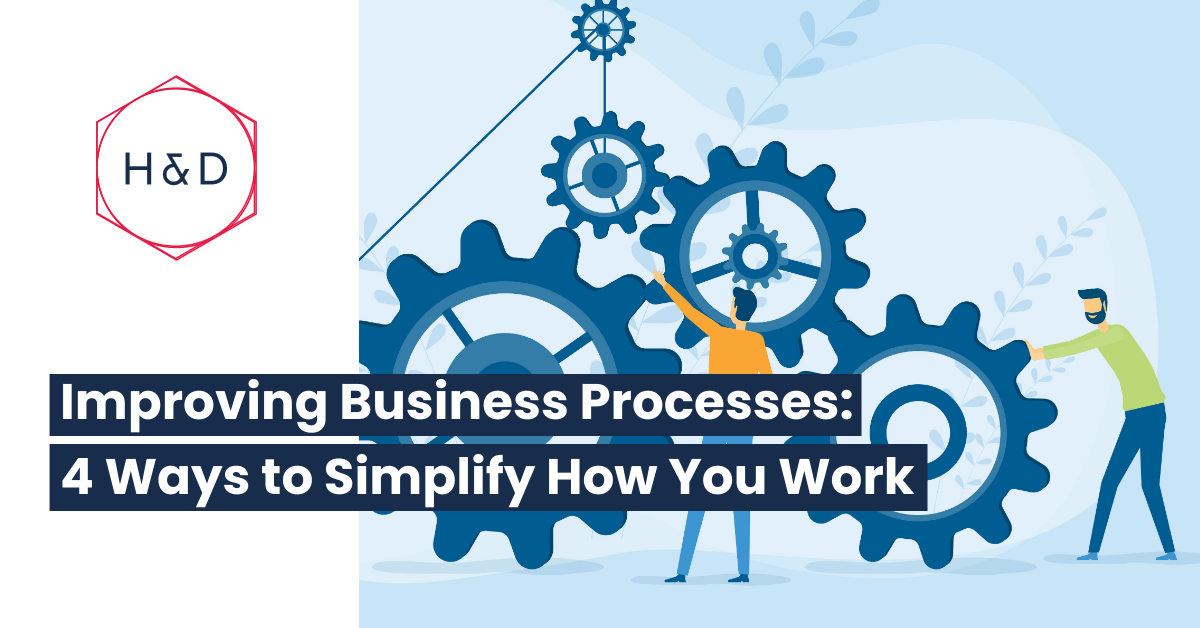
Whether you’re making your morning coffee, or mapping out the timeline of your next project - everything has a process. Having robust processes in place will streamline your procedures and increase efficiency, which makes for a far more enjoyable experience. On the flip side, flimsy processes will usually result in unhappy clients, frustrated team members, and possibly even missed deadlines. So, how do you improve your processes to simplify the way you work?
In this blog, we chat to H&D co-founder Romi Dexter about her experience with improving processes, and give you a shortcut to improving your own with 4 key learnings from Romi’s story.
What was your first experience with process improvement?
My first management role was when I was 20. My team had to produce and distribute video, news articles and short format content to 8 different sites every morning within 2.5h, produce a large level of content for corporate customers and manage the rollout of new content networks and websites using competing third party content providers throughout APAC for Apple, Microsoft, Telstra Australia and a bunch of media outlets.
I had no clue what I was doing and had very little understanding of coding (I was a video editor) and I had to scale fast. Everything we were doing was new, there was no online documentation and we had to make it up as we went - but also we could not get shit wrong - a spelling mistake or missed deadline would mean losing a massive contract like MSN or Telstra. We had to have exceptional quality, efficiency and creativity.
What did you do to start improving processes?
I quickly learned that in order to deliver we would need a solid process, to use technology to automate wherever possible and that every member of my team would need individual accountability and ownership. Also, as I was not a technical person and code freaked me out, I needed to have crystal clear steps so I didn't break anything.
We benefited from repetition with our content production, we were ruthless with every step of the process - continuously looking for ways to reduce and automate, every minute counted.
Everyone was clear on their responsibilities within the process and the handoff points - and we became excellent communicators - if there were delays, issues and general updates. Everyone knew about it and the entire team worked together to deliver high quality and innovative content and projects every day.
What was the result of this active process improvement?
This resulted in a highly productive team that was very easy to scale, I was also able to quickly step away from the hands-on doing and focus on more strategic implementations and projects with absolute confidence in my team and our delivery.
I was process driven from necessity but this sparked for me a long term love of process and how it can be used to remove admin, grow great teams, produce exceptional results and allow you to individually focus on more creative and interesting things.
4 Key Learnings for Building Better Processes
1. Map out the process with everyone in the room
Get everyone involved in the process in one room and talk through the flow of every process, being really clear on who is responsible for what, where the handover points are, and how the handovers happen. Having everyone discuss together will help to clarify and facilitate consensus and agreement across the board.
Rather than defining and giving your team a process in isolation, mapping it out collaboratively with your team will give them more ownership – they’ll understand the context of each process because they’ll see the bigger picture, not just their own little piece of it - and will likely have some great feedback and ideas to make the process even better.
2. Find the shortcuts
When you’re reviewing processes, figure out what you can reuse and automate. There are always ways to extend and expand on what you’re already doing – in Romi’s case, it was taking 1 piece of content and turning it into 10 pieces of content. You can also identify any manual steps that have the potential to cause issues and automate those – saving time and reducing the risk of error.
Templating common communications, presentations, documents, etc, can also be a great way to speed up some of those key steps and improve your consistency and quality across your team.
Find problem areas to fix and look for any pain points around quality issues – a focus on quality will give a better result than a focus on speed. Speed will naturally be a result of a quality focussed process and sets the right direction for your team; so be great, not fast.
3. Bring the process to life
Use project management tools with references to knowledge bases and articles to document your process – avoid one off training or massive manuals by centralising your knowledge within the platforms that your team are using daily. Building training into the process will help you get it right the first time, increase best practice adoption and will more readily support continuous improvement within your organisation.
4. Change is the only constant
Processes don’t have to be kept stagnant, so stay on the lookout for ways to enhance and improve them. New opportunities will come about, new technology will become available, and you should always be looking at small things you can change and improve. Build these changes into your blueprints and knowledge base articles for continuous improvement.
If you'd like to optimise your business processes, get in touch to find out how we can align your sales and marketing efforts using HubSpot. Not only will HubSpot streamline your business procedures, it will also provide one centralised and easily referenceable source of truth for the whole team to work with.




